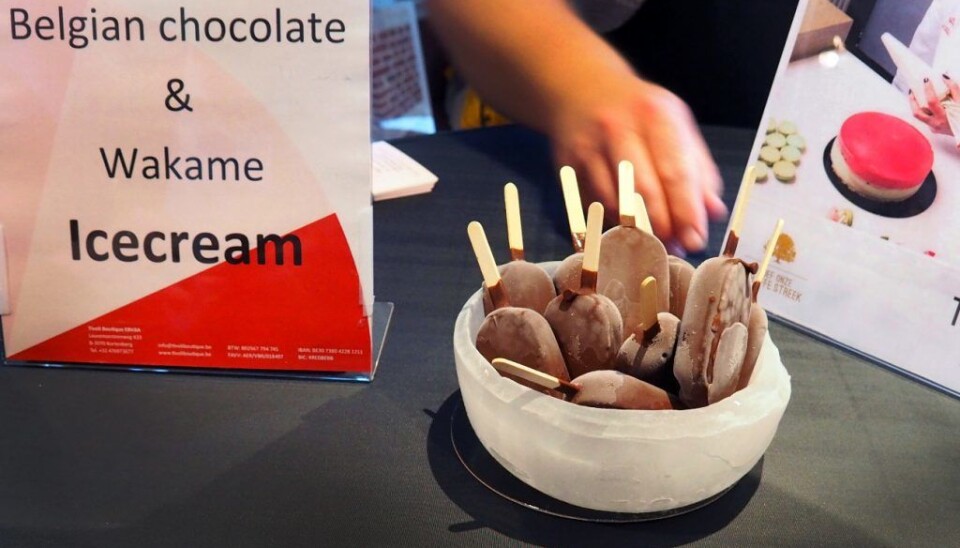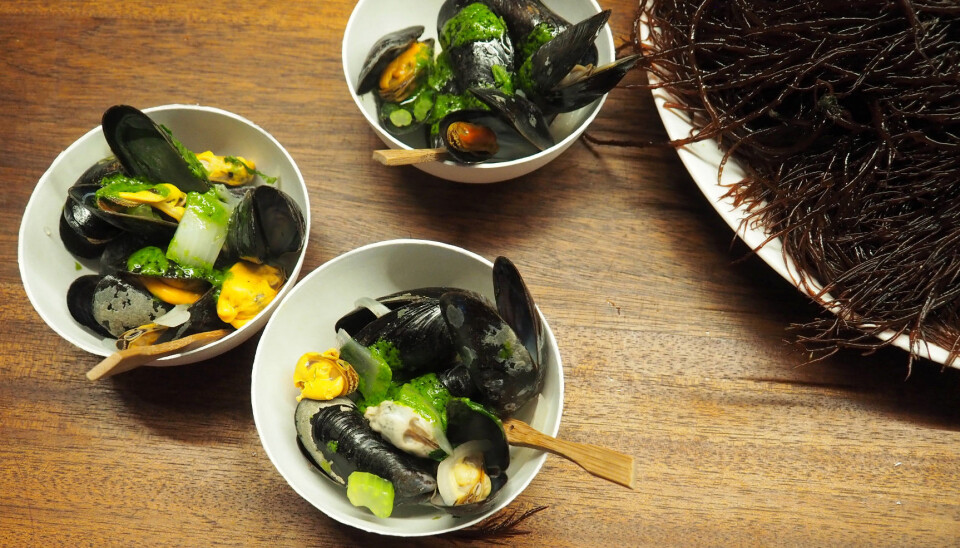
Here's what happened when I served my friends chocolate with seaweed
An impromptu session of new product testing with a group of friends in northern Norway ensued after I returned from a seaweed trade fair with new product samples of chocolate infused with seaweed or chocolate seaweed.
I grew up in Singapore, and one of my first encounters at age of about five with seaweed was at a cousin´s wedding dinner. Seaweed is often served in conjunction with jellyfish at Chinese wedding banquets as cold dish appetizers.
Tepid reaction
As such, I had taken for granted that the chocolate seaweed samples would bring positive reviews with thereafter queries of where to purchase such chocolate bars or when do we see them at the local grocery stores in Tromsø. But the immediate reactions to the chocolate seaweed was tepid at best. Most concluded that chocolate infused with seaweed was not a palatable product, and that a perfectly good product like chocolate was ruined.
My current work gives me the opportunity to study and understand more about seaweed production and consumption in northern Europe, where I´m encountering the different flavour profiles of seaweed dishes served usually at seafood trade fairs or conferences. These observances about seaweed as food in northern Europe can be compared with those of East Asia and Southeast-Asia where seaweed or sea vegetables are for part of the staples found at meal times. Seaweed in small packages brought as snacks for a school bus trip to a science park excursion was something I was familiar with as a child. In Scandinavia, I would buy similar seaweed snacks today at specialty Asian grocery stores.
The observations from how seaweed is presented as food in northern Europe and from noting that chocolate infused with seaweed is not a guaranteed gastronomic delight in Norway led me to investigate further, the processes of new product market introduction and product innovation. For seaweed as food to be a success, how are some in the culinary field doing it?

What is an innovation?
Innovation is a process of search and recombination of existing elements, factors or components. These elements are usually commercially available, some with long historical use, whose use or presentation of which evolves by employing different techniques and processes.
In the early Viking era, seaweed washed ashore during stormy seasons were gathered and used to make glass, fertilize soil and feed animals. In modern history, seaweed has been commercially harvested for over 70 years in Norway for the production of alginate. Seaweed as a culinary resource and food for human consumption in Norway and in the broader context of Scandinavia has for the most part been overlooked.
Conference dinner inspiration
It is in this context that the dinner at Seagriculture 2019 proves a good case example of how seaweed is being (re)introduced into the northern European diet. Seagriculture 2019 is the 8th International Seaweed Conference held from 25-26 September 2019 in Ostend, Belgium. Chef de Cuisine to the dinner was Seaweed chef Donald Deschagt, who has a restaurant called Le Homard et La Moule, located nearby in Bredene, Belgium.
Noticeable in this setting are the synergies of location, context of the event and the food. The evening´s dining ambience with a display of familiar seafood dishes such as the Spanish paella, helps usher in various novel seaweed products. New seaweed foods presented at dinner introduced diners to new means to conceive of using seaweed in food.
The dinner menu by Deschagt that included oyster sea buckthorn with sea fennel and North Sea grey shrimp with sea lettuce and cheese combined familiar ingredients with the relative unfamiliarity of seaweed types. Innovative plating techniques such as using a brush of seaweed pesto in the bowl or on plates, also sparked the interests of diners and participants to Seagriculture 2019. The very idea is for others to take inspiration from the event and try their own hand at using seaweed at home.

Enthusiasts needed
Key individual efforts (gastro-entrepreneurs and chefs) who are knowledge experts of the field, who consistently work towards culinary evolution and a changing palate-scape are also part of the innovation processes. Such entrepreneurs and leaders often have both passion and vision for a new culinary reality:
Kortom, de helft van de tijd merkt u het misschien niet eens dat er zeewier in uw gerecht zat, en dat is nu ook onze missie : de wondere wereld van wieren, algen en duinenkruiden toegankelijk maken voor iedereen, klein of groot, jong of oud.
“In summary, you may not even notice half of the time there was seaweed in your dish, and that is now also our mission: to make the wonderful world of algae, algae and dune herbs accessible to everyone, small or large, young or old”, stated Donald Deschagt in an interview in 2016.
To drive home Deschagt´s point, the wakame infused chocolate ice-cream was a great success at the conference, demonstrating that even a perfectly familiar treat can be enhanced with seaweed to give that element of “spennende” (Norwegian for “exciting”).








